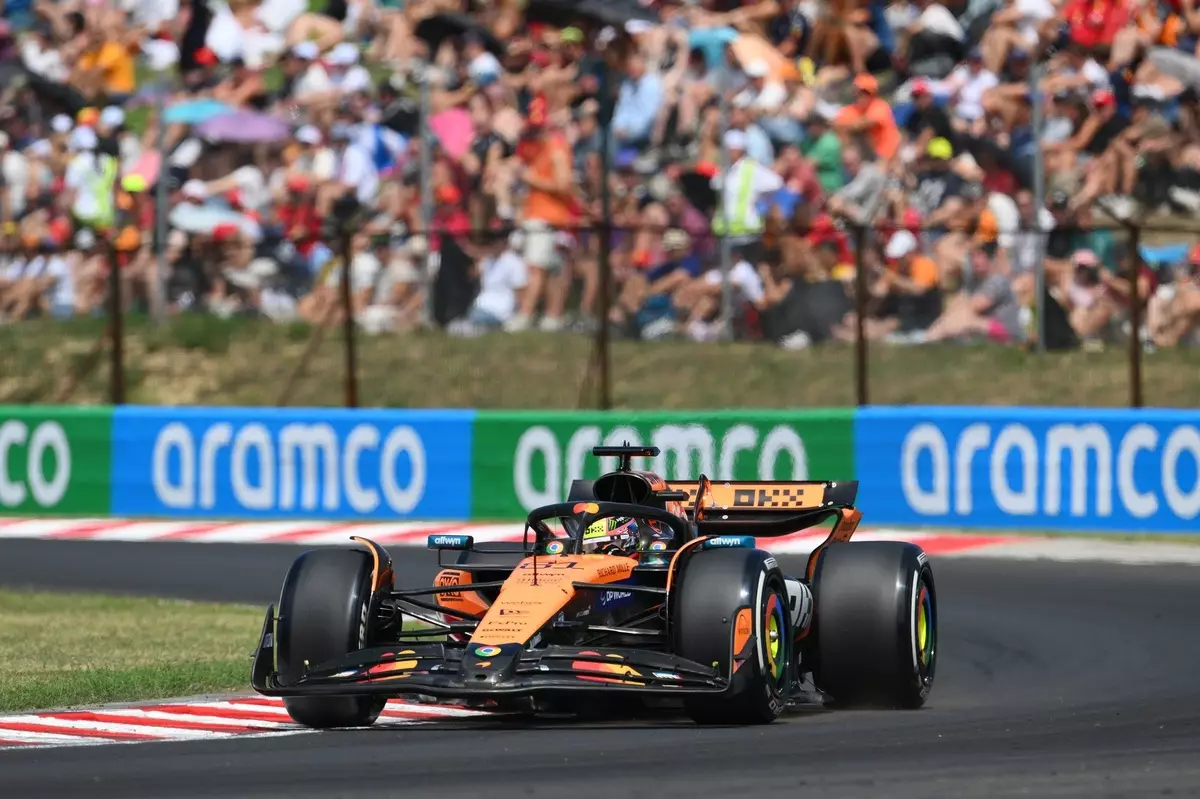In the highly competitive landscape of Formula 1, where every millisecond counts, McLaren’s performance during the final practice session at the Hungarian Grand Prix sent a clear message: the team is poised to challenge the traditional dominance of the sport’s top contenders. Oscar Piastri’s blistering lap time of 1:14.916 not only marked his personal breakthrough but also signified a pivotal shift in the balance of power among teams. The recent dominance of Red Bull and Ferrari is being challenged by McLaren’s calculated aggression, signaling a more dynamic and unpredictable race ahead. This session unveiled their refined approach, with strategic tire management and bold timing that left competitors scrambling to keep pace.
No Longer Just a Contender, McLaren Looks Set to Lead
Historically, McLaren has often played the role of a perennial outsider, occasionally punching above weight but rarely emerging as the outright favorite. Yet, this practice session demonstrated a level of confidence and precision that seems to suggest the team’s evolution. Piastri’s decision to push on fresh soft tires at the critical moment exemplifies their strategic daring; it wasn’t merely about raw speed but about calculated risk-taking that yielded stunning results. Lando Norris, closely trailing Piastri, proved that McLaren’s frontline drive is no longer a one-man show but a testament to their cohesive team effort and resilience.
This impressive performance raises questions about whether McLaren is orchestrating a calculated assault on the established order or merely capitalizing on fleeting opportunities. Given their recent development momentum and tactical acumen, it’s reasonable to believe that their rising competitiveness is a sign of deeper technical enhancements. The team’s ability to optimize tire use and choose the right moments to strike suggests a sophisticated understanding of the complex Hungarian circuit and the broader race momentum.
The Evolving Battlefield: From Red Bull to Ferrari and Mercedes
While McLaren steals the spotlight with their outstanding practice, the rest of the field feels the pressure to respond. Red Bull, often considered unstoppable this season, showed signs of struggle in the session, with Max Verstappen only managing the 12th fastest time. Verstappen’s inconsistent balance and the struggles of his teammate Yuki Tsunoda, who finished 19th, underline the chinks in Red Bull’s armor. Similarly, Ferrari’s Charles Leclerc, although quick and consistently finishing high in practice sessions, couldn’t match Piastri’s blistering pace—dipping just before the ultimate lap, hinting at the delicate margin of performance in F1.
Mercedes, once dominant, now appears to be in a state of flux. George Russell’s eighth-place finish and ongoing technical struggles point to a team that needs to refine their setup further. Yet, it’s notable that even with these setbacks, Russell was able to split the Ferrari drivers, demonstrating resilience amid adversity. Meanwhile, Aston Martin’s performances, with Fernando Alonso and Lance Stroll securing sixth and seventh, indicate that multiple teams are vying for the top, and the race for supremacy is far from a clear Red Bull-Ferrari duel.
The Significance of Strategy and Adaptability in Modern F1
What stands out most from this session is not just the raw speed but the strategic fluidity displayed by McLaren. Their choice to gamble on fresh tires at the right moment highlights how modern Formula 1 is increasingly about nuanced decision-making. The ability to interpret track conditions, manage tire degradation, and execute perfectly timed pushes has become as critical as outright engineering excellence. As teams continue to evolve their approaches, the Hungarian practice results suggest that unpredictable factors could shake up the grid come race day.
In a broader sense, this session feels like a microcosm of Formula 1’s ongoing evolution. The supremacy once held by dominant teams is now challenged by those willing to take risks and think outside the conventional wisdom. It’s a reminder that victory in F1 isn’t just about raw speed but about mastery over strategy, adaptability to changing conditions, and relentless innovation. As McLaren demonstrates audaciously, embracing risks with calculated precision can redefine the pecking order and set the stage for an exhilarating season ahead.


Leave a Reply